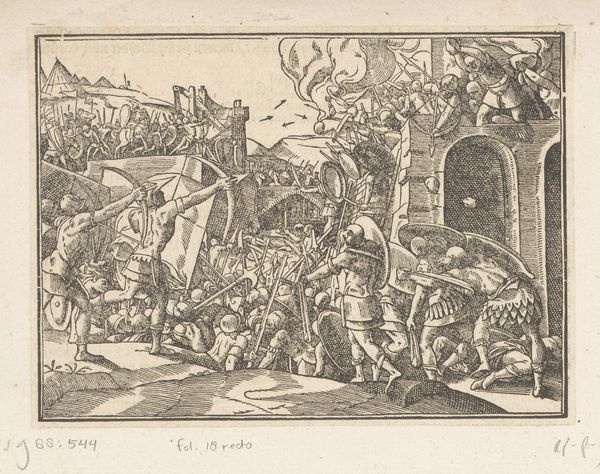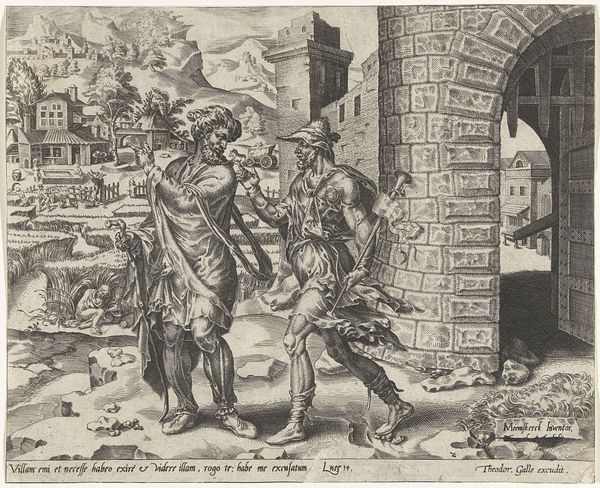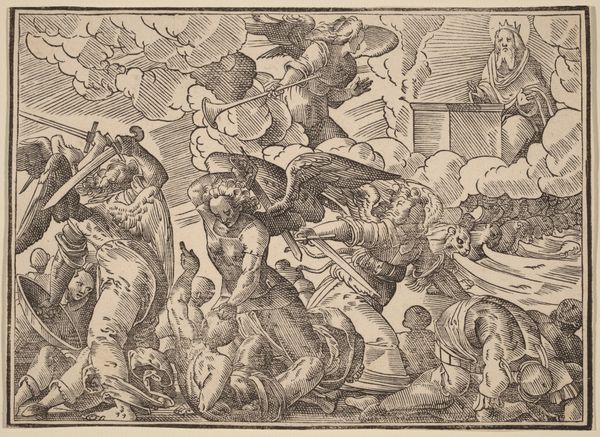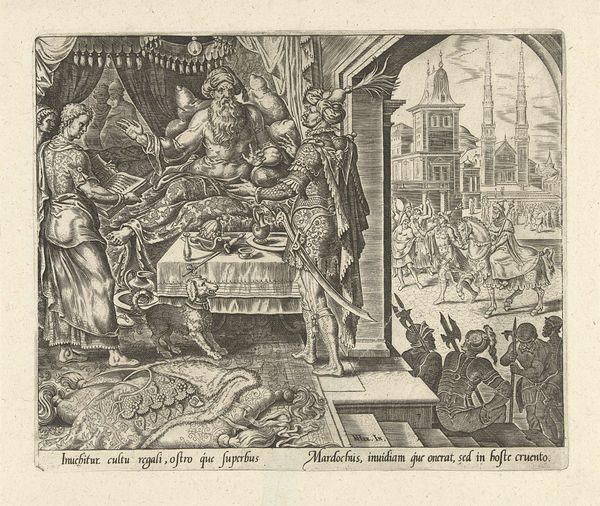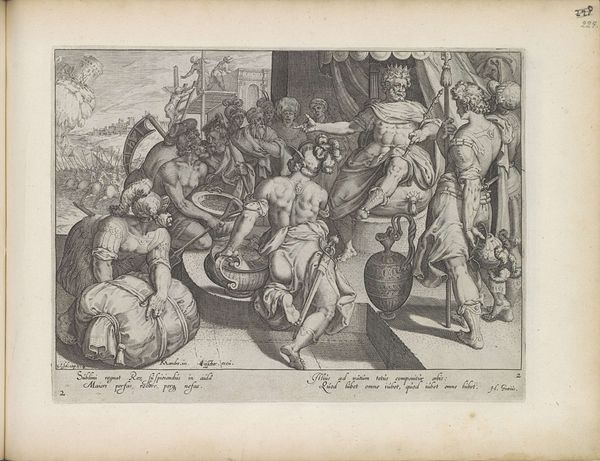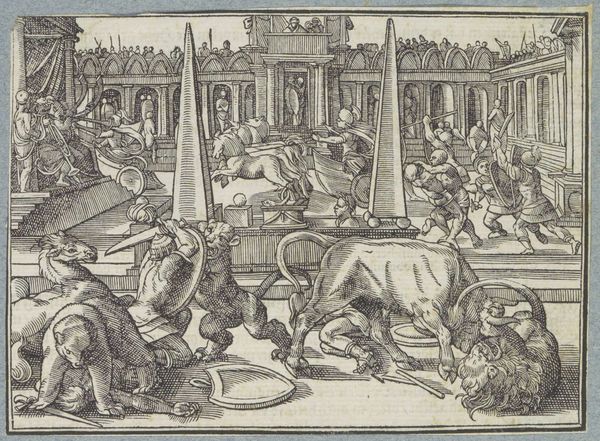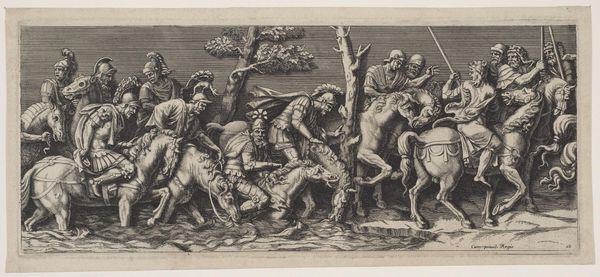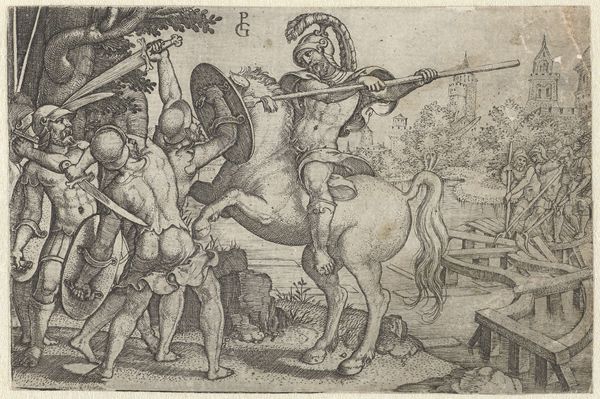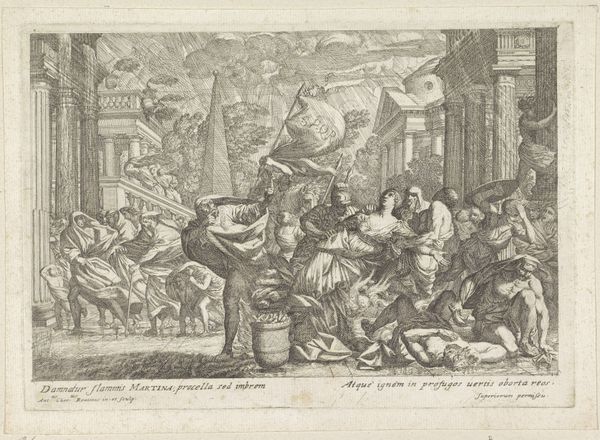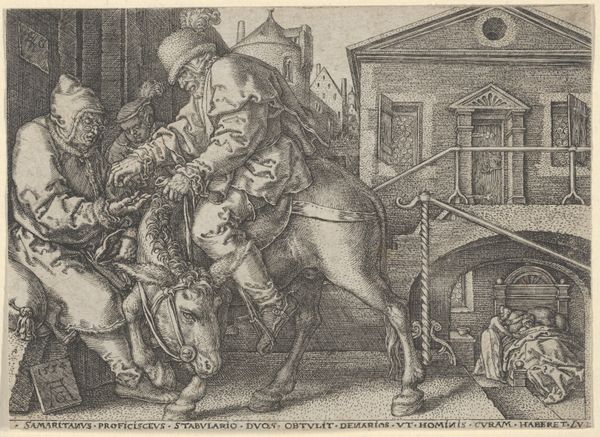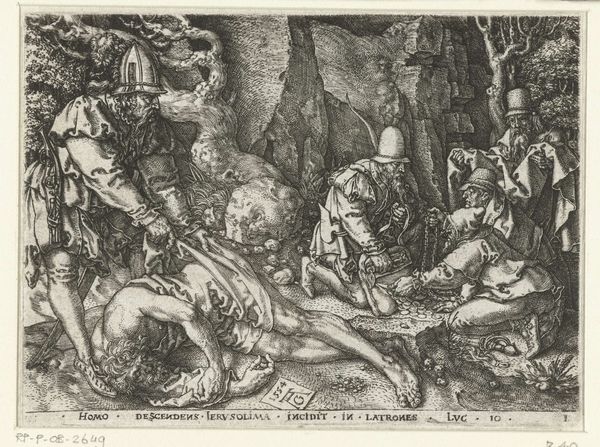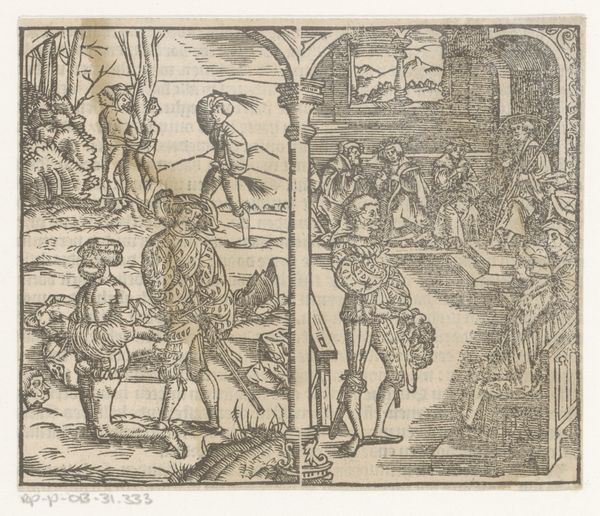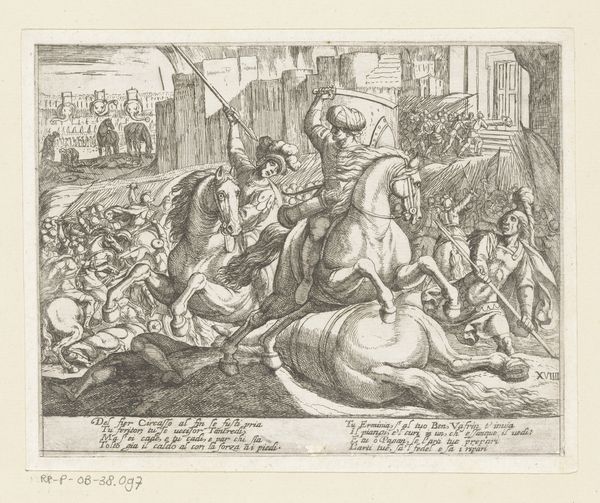
print, engraving
#
narrative-art
#
pen drawing
# print
#
pen illustration
#
pen sketch
#
figuration
#
11_renaissance
#
line
#
history-painting
#
italian-renaissance
#
engraving
Dimensions: height 136 mm, width 180 mm
Copyright: Rijks Museum: Open Domain
Curator: This engraving, crafted by Giovanni Battista Fontana between 1572 and 1573, depicts "The Death of Titus Tatius". It's currently held in the Rijksmuseum collection. What strikes you initially? Editor: A sense of overwhelming chaos and violence, certainly! The stark lines heighten the drama, making it difficult to discern any single focal point. The overall effect is disturbing. Curator: The artist masterfully utilizes line work, wouldn’t you agree? The density and direction create a sense of movement and spatial depth. Note how Fontana uses hatching and cross-hatching to model the figures and architectural elements. The lines are incredibly precise. Editor: I do see how Fontana builds this depth, yet it also makes me think about the complex power dynamics at play. The subject itself deals with themes of betrayal and political upheaval in the power-hungry world of early Rome, a foundational mythology often employed to bolster dominant ideologies. The violence almost seems ritualistic. Curator: I concede your interpretation, but let us not forget how the arrangement of the figures creates a strong diagonal thrust that draws the eye from the lower left to the upper right. Editor: That’s interesting, considering what is placed there! In the left background, an entire audience looms behind Titus Tatius' murderers. Consider how such violence resonates even now: leaders can meet grisly ends while indifferent crowds watch from the sidelines. It resonates deeply within contemporary social commentary. Curator: It’s a perspective, and your focus on modern parallels gives new richness. However, let us not undermine the fundamental formal strength of the composition itself. Editor: Of course! Still, it makes you reflect upon how artists interpret violence through various media. Fontana, in choosing print, ensured that his version would circulate widely, shaping narratives for years to come, right? Curator: Yes, I find that perhaps its genius. Thank you for your insights; your contemporary connections are stimulating. Editor: Thank you! This just shows how classical works can still provoke important debates when filtered through contemporary discourse.
Comments
No comments
Be the first to comment and join the conversation on the ultimate creative platform.
